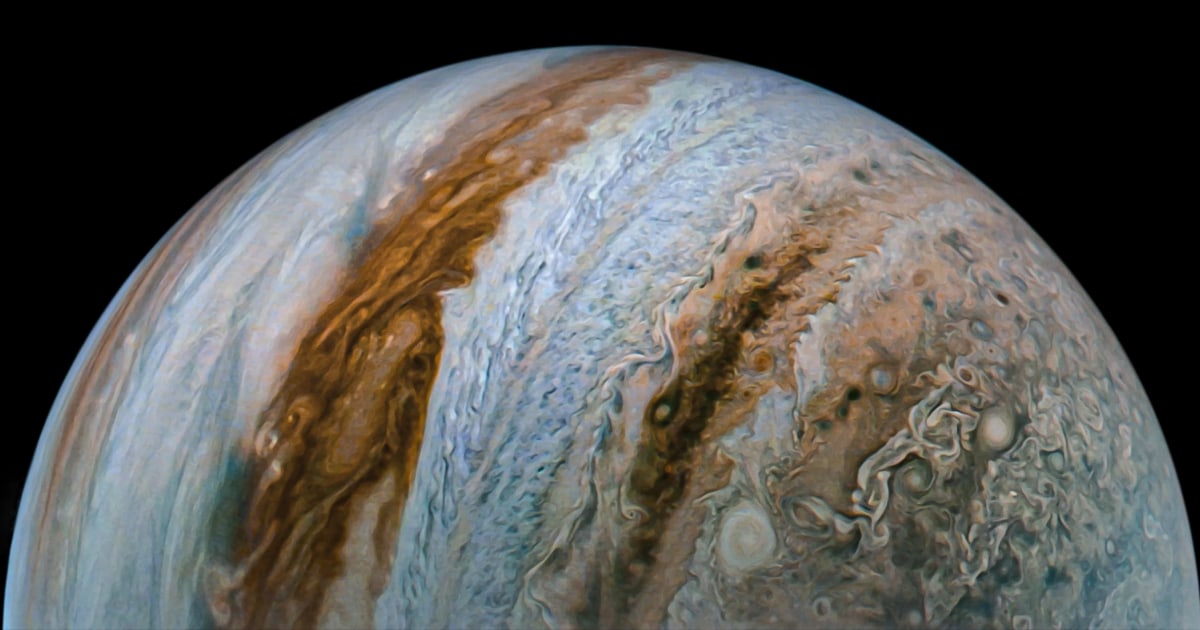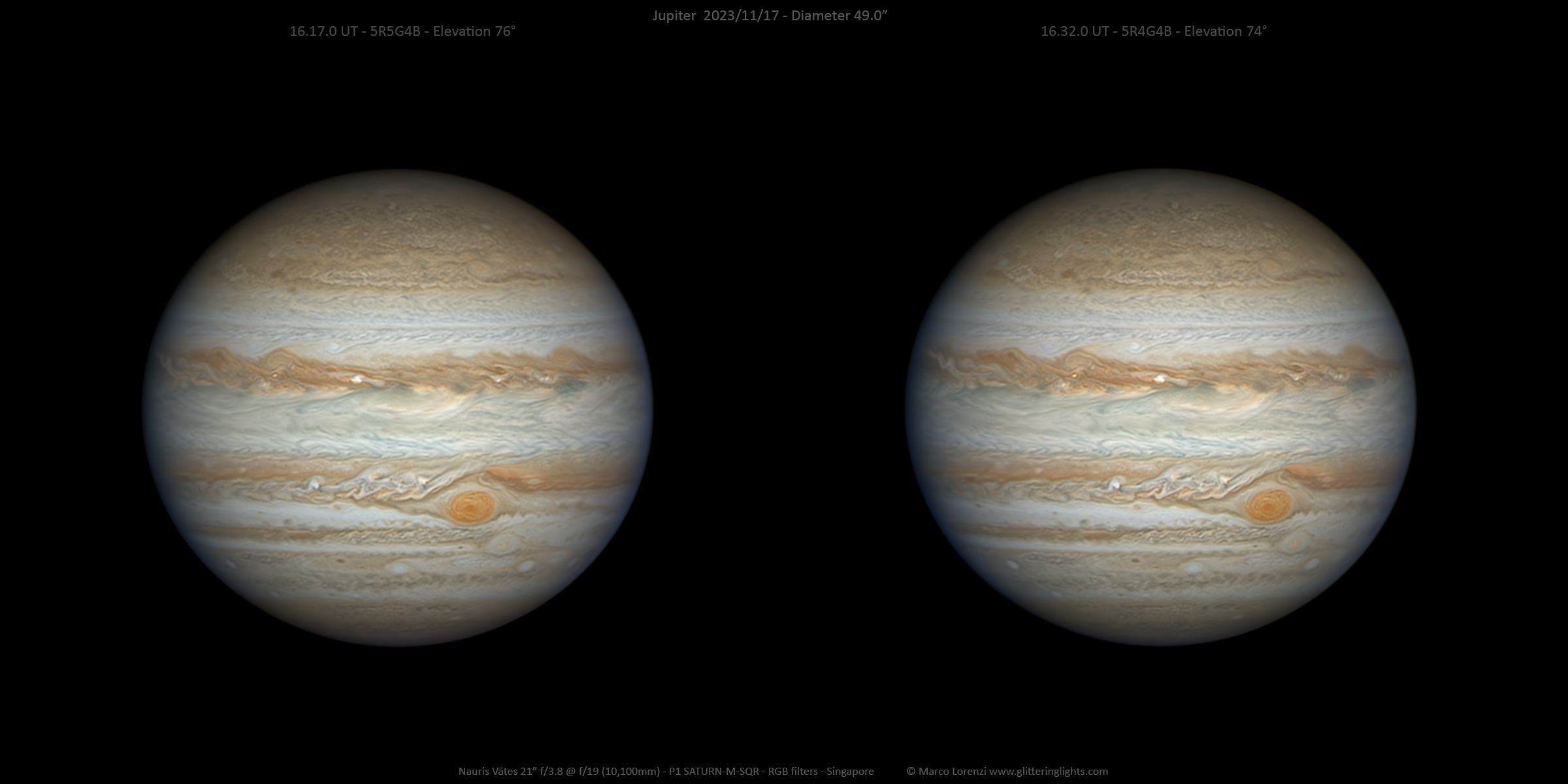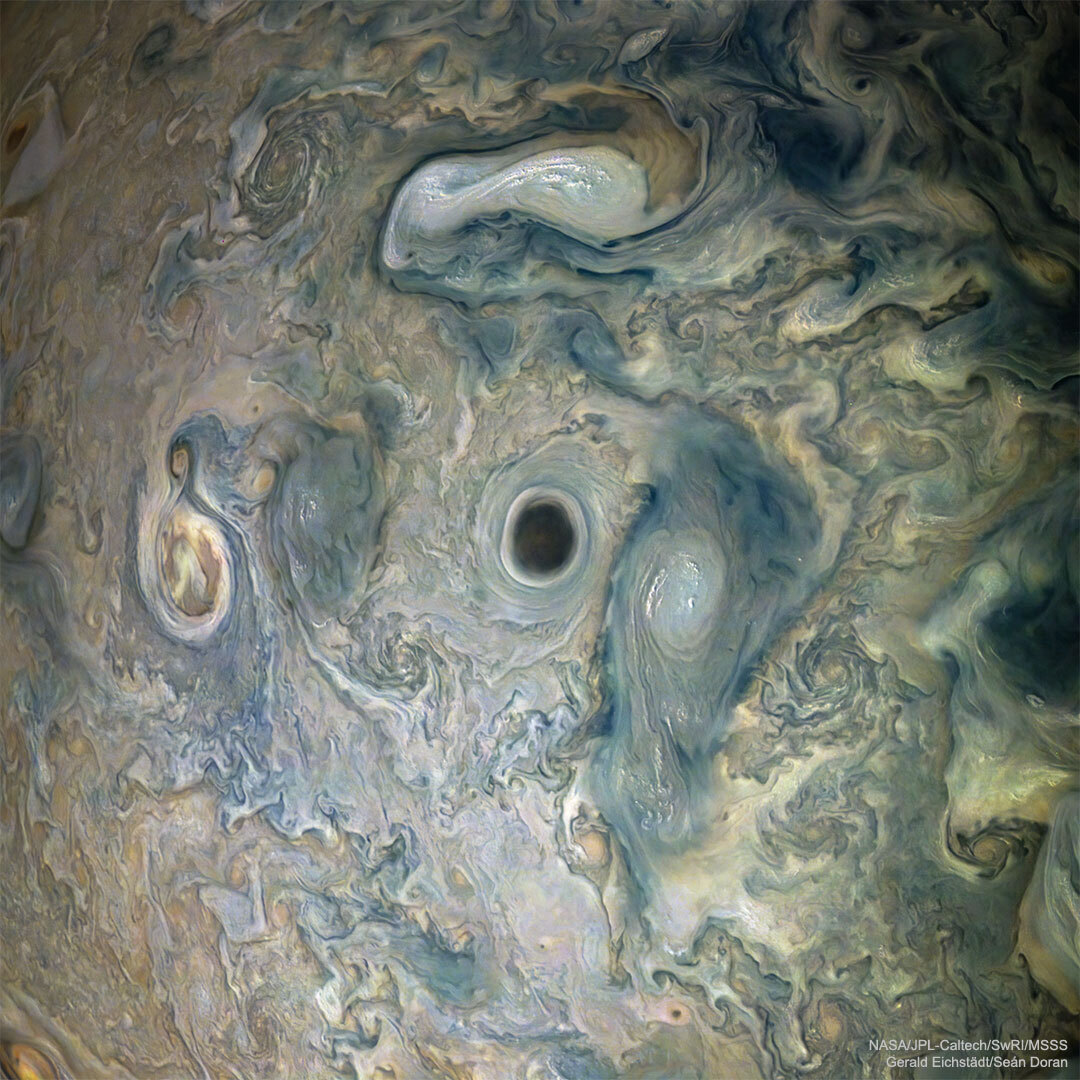#jupiter

#Pushya (பூசம்): #Nourishment
Placement: 03° 20’ to 16° 40’ of Cancer
Element: #Water (Neer)
Pushkara Navamsha/Bhaga: 2nd pada/8°
The Sanskrit word "Push" signifies nourishment, and this is precisely what Pushya nakshatra represents. Positioned at the center of the Cancer zodiac (the natural fourth house), Pushya embodies the motherly aspect of nourishment. A mother's love is regarded as the purest and most unconditional form of love on earth, as she continues to nurture her children, irrespective of their characteristics. This nakshatra is also known as the "king of nakshatras" since it symbolizes growth and creation in all domains of life. It is considered an auspicious nakshatra for initiating any endeavor, with the exception of marriage.
Symbol: The symbol associated with Pushya is the udder of a cow. The udder secretes milk that not only nourishes the calf but also humans. Cow's milk is still a staple in the daily diet of many people around the world, demonstrating the nourishing ability of this nakshatra on a global scale. In Vedic culture, the cow is revered equally to a mother for the same reason. Therefore, the symbolism of the udder of a cow in Pushya #nakshatra clearly depicts its quality of growth. If Cancer represents the cow, then Pushya represents the udder of the cow.
Natural healers: Ashwini, Ardra, Pushya, Hasta, Anuradha, Moola, Dhanishta, Satabishak, Revati.
Ruler: #Shani (Saturn) The planetary ruler of Pushya nakshatra is Shani, also known as #Saturn. This planet is associated with the quality of consistency, which is reflected in this nakshatra. For example, a mother is consistent in nourishing her child, and similarly, Pushya represents the nurturing and nourishing qualities that are consistent and reliable.
Deity: The ruling deity of this nakshatra is #Brihaspati, also known as Jupiter. As the natural teacher of dharma and higher wisdom, #Jupiter embodies the qualities of guidance, enlightenment, and expansion.
Animal: The animal associated with this nakshatra is the " #male #goat ".
Guna: This nakshatra is classified as rajasic, meaning it is action-oriented with an emphasis on stability, comfort, and nourishment.
#Power: This nakshatra embodies the "Brahma Varchava #Shakti", which refers to the power to tap into the creative energies of the universe, as personified by Brahma.
General attributes: Pushya nakshatra embodies growth, expansion, and comfort. Individuals born under its influence are inclined towards stability and ensuring the comfort of those around them. Due to its association with Saturn and Jupiter, they may face challenges and obstacles until the age of 32. This period serves as a valuable learning experience for them to gain a better understanding of the world. Pushya natives are drawn to activities such as teaching, learning, traveling, writing, and publishing. They place great value on family, home, and community, and are known for their patience and perseverance in pursuing their goals. These are general characteristics and may vary among individuals.
Jupiter's exaltation: In the sign of Cancer, the Guru of the Devas, Brihaspati/Jupiter, experiences exaltation. This nakshatra, located from 3°20’ to 16°40’ within the heart of Cancer, grants him his maximum exaltation strength. Cancer is regarded as the sign of Universal Motherhood, which signifies love for all things and beings in the world - this is the ultimate path to Moksha/Enlightenment. Guru, having knowledge of all that exists in the Universe, arrives here to obtain the highest level of comfort. This is because the path to Moksha is achieved through true love, and true love originates from having a family. When one has a family, they begin to love and work tirelessly for them. Gradually, the love expands to include others outside the family circle (because the individual becomes accustomed to giving love), and this is what Cancer symbolizes: the Universal Mother.
Note: However, in a world where deceitful and complex relationships have become a social norm, the concept of unconditional love can often seem idealistic and impractical. This is when the darker aspect of Pushya nakshatra can manifest, which includes possessiveness and manipulation.
https://www.milkywayastrology.com/post/pushyanakshatra

#Punarvasu (புனர்பூசம்): Principles
Placement: 20° 00’ of Gemini to 03° 20’ of Cancer
Element: #Water (Neer)
Pushkara Navamsha/Bhaga: 2nd and 4th Pada*/NA
Just like Ashwini #nakshatra, Punarvasu also has two aspects: one sattvic and the other tamasic. The balance of life is shown by equating sattva with tamas and vice versa. Punarvasu represents the cyclical nature of #time, where good times are followed by bad and vice versa. This teaches us the #philosophy of life. Punarvasu is paired with the next nakshatra, Pushya.
Ruler: #Jupiter, the planet of principles, dharma, and wisdom, governs this nakshatra. Additionally, Jupiter also governs Sagittarius, which is the natural ninth house of Dharma.
Symbol: The symbol of Punarvasu is a "quiver of arrows", which signifies the importance of being mentally and physically prepared for any upcoming situation. It also represents the concept of time, which constantly moves forward without stopping. The nakshatra's other symbol is a "house", which signifies the ability to remain steady and #unchanging amidst changing circumstances.
Deity: The deity associated with Punarvasu nakshatra is #Goddess #Aditi, who is known as the mother of the 12 Adityas, which are solar deities including Surya (the sun god). Aditi symbolizes the nurturing and nourishing motherly #nature, which is associated with this nakshatra.
The connection between Punarvasu and Sagittarius is apparent through the aforementioned characteristics.
Animal: #Female #cat.
Guna: This nakshatra is characterized as Rajasic, action-oriented, with a focus on stability and sustainability.
Power: Punarvasu represents the power of retrieval and restoration, known as "Vastuva Prapana Shakti".
Story of Lord #Ram: Lord Ram, an incarnation of Lord Vishnu, was born under the Punarvasu nakshatra. He was a virtuous prince who was supposed to become the king, but due to unforeseen events, he was banished from his kingdom just a day before his coronation. Despite this setback, he never lost hope and stayed true to his values and beliefs. He faced numerous challenges during his exile, but he persevered and eventually returned to his homeland after 14 years to claim his rightful place as the king. This story illustrates the significance of time, morality, duty, principles, hope, and resilience, which are all associated with this nakshatra. Additionally, the number 14 holds a special significance in this story.
General attributes: Individuals born under Punarvasu nakshatra are likely to have firm beliefs and principles, whether they are good or bad. They may dedicate their entire life to upholding these beliefs. As they age, they may become a source of inspiration and hope for others. Although they may appear to go with the flow, they are adaptable and have a deep understanding of the nature of events. They are calm, composed, and patient, waiting for the right moment to take action. They may frequently discuss topics related to time, karma, and the cyclical nature of things. These are general qualities, and reader's discretion is advised. The fourth pada of Punarvasu is considered to be doubly strong and auspicious because it is a vargottama pada.
https://www.milkywayastrology.com/post/punarvasu

#Punarvasu #nakshatra
Zodiac Sign: Gemini/Cancer
Degree: 20:00 in Gemini to 3:20 in Cancer
Purusharth: #Artha
Deity: #Aditi (Mother of Universe)
Gana: #Devata
Direction: #North
Punarvasu is a compound word made up of two words. Vasu is the second, and Punar is the first. Vasu means the Ray of Light, while Punar means once more, returning, or repeating. Punarvasu, when taken as a whole, means "becoming light again" or "light returning." Punarvasu Nakshatra therefore literally means "Ray of Light Lunar Mansion" in English.
It is said that because Lord Ram was born in this nakshatra, the natives may possess traits associated with him. For instance, if a native has a large family, they will likely have a strong love for them and be prepared to do anything for their pleasure and well-being.
CHARACTERISTICS:
You have a moral character and are happy and comfortable. You are best described by the idiom "Simple living and high thinking." You value traditions, hold strong religious convictions, and subscribe to long-held ideas. Saving money is not something you do on a regular basis. However, you will experience a lot of dignity and respect in life. People enjoy you because of your purity and openness. You always take a stand for those in need. When it comes to unlawful or immoral acts, you oppose them vehemently. You avoid negative individuals and thoughts because they hinder your spiritual development. Your mind and brain are always in harmony. Your ability to support and comfort others is a remarkable talent.
Your charming personality is enhanced by your gentle disposition and merciful and charitable motives. You are calm, sincere, serious, a believer in the truth, a lover of justice, and disciplined. Your interpersonal skills and strong friendship are well known. You constantly steer clear of pointless risks, and by God's grace, if a problem does arise, it is resolved. You care deeply about your family and won't think twice about making extensive journeys for the good of society. You can overcome the most challenging issues with your focus and do anything similar to this, just like an archer succeeds in hitting his/her target. Regardless of how many times you fail, you never give up trying. You are gifted in many areas and are capable of doing anything well.
You can be successful in any field because of this. You are exceptional in every field, whether it be performing, teaching, writing, or medicine. You hold your elders and parents in high regard. When it comes to your nature, you have an honest demeanor, love peace, and are reasonable. Your kids will act politely around everyone as well.
SUITABLE JOBS FOR THOSE BORN UNDER PUNARVASU NAKSHATRA:
Teacher, Doctor, Actor, Psychologist, Hospitality industry, Tourism
MEN BORN UNDER PUNARVASU NAKSHATRA - CHARACTERISTICS:
This nakshatra's individuals are very gentle and giving people. They eventually turn out to be spiritually inclined as well. Additionally, because natives occasionally act in ways that go against their nature, they may be a little difficult to understand. As a result, they will become more complex and difficult to comprehend. Due to their success later in life, natives may turn egotistical and cruel to their younger peers. Illegal actions are another thing that the native will find unbearable. He won't partake in them and exhort others to do the same.
The natives will have strong relationships with their families in terms of family. He will give his all to please his family because he loves them so much. The local has a good chance of getting along well with his cousins, who will support him in difficult times. However, a male married under the Punarvasu nakshatra will not have a happy marriage. The natives and their spouses will have a lot of disagreements and disputes. Even a divorce or separation could result from this. Additionally, the continual disputes and arguments will harm the locals' health, necessitating possible medical attention.
WOMEN BORN UNDER PUNARVASU NAKSHATRA - CHARACTERISTICS:
A materialistic streak in native will be present. These material possessions will provide her the most delightful pleasure. She will be happy here, in this place. The native will, however, have a lovely voice. The native, however, will not hesitate to voice her viewpoint, which could occasionally be the reason why the native is viewed as disrespectful. The native will not be regarded as popular; they will only show respect to those they believe merit it.
The native will have a devoted family to lean on. Her family will admire and cherish her. She will defend her family in difficult situations as well. Female marriage life under the Punarvasu nakshatra would likewise be highly rewarding. She will have a supportive, devoted, and loving husband. Her children will also serve as her greatest pillars of support.
COMPATIBILITY:
Compatible with people born in Mrigashira Nakshatra, Pushya Nakshatra, Chitra, Hasta and Uttarashada Nakshatra.
WEALTH FOR PUNARVASU NAKSHATRA INDIVIDUALS:
When making crucial judgments, the native must use great caution. The natives may make poor decisions as a result of certain planets' positions. The stars will be on the native's side after he turns 32, though. The native is most equipped to operate in the service industry from the perspective of profession. Partnership businesses are not recommended for natives since there is a greater likelihood of partner conflicts, which might result in financial losses. Additionally, because the native works extremely hard, success is a given for him in any industry.
PUNARVASU NAKSHATRA PADAS:
1st Pada (Aries): Love Traveling, Adventurous, Friendly, Hardworking
2nd Pada (Taurus): Business skills, Materialistic, Sensitive, Pleasure seekers
3rd Pada (Gemini): Intellectual, Rational, Creative, Focused
4th Pada (Cancer): Kind, Philanthropic, Nurturing, Goofy
SIGNIFICANCE OF DIFFERENT PLANETS IN PUNARVASU NAKSHATRA:
Venus: People born under the influence of Venus in Punarvasu Nakshatra tend to be very helpful. Punarvasu nakshatra follows Ardra nakshatra, which typically indicates a predisposition for the native to be supportive or consoling to individuals following an accident.
#Jupiter: An individual with Jupiter in Punarvasu Nakshatra is likely to be quite calm and reserved. Along with this, the natives will also emerge as very reticent people.
Rahu: Rahu in Punarvasu nakshatra might cause instances of native dishonesty. This is because they won't be happy with their spouse. Additionally, there is a great probability that the individuals will cheat in their relationships.
Mars: The hostile temperament of the inhabitants is caused by Mars in Punarvasu nakshatra. The presence of Mars will also make the natives daring and athletic.
Sun: When the sun is in the Punarvasu nakshatra, the native becomes conceited. They will be pleasant and gorgeous, and they will like being the center of attention. Additionally, because the sun is in this nakshatra, the locals have a strong sense of loyalty to their friends and family.
Moon: The native is interested in assisting others, especially those who have endured hardship in the past, when the moon is in the Punarvasu nakshatra. As a result, they will be exceedingly kind, loving, and helpful. The native will also make people feel very at ease in their presence.
Mercury: Mercury in Punarvasu Nakshatra tends to make people highly grounded individuals. They also turn out to be incredibly knowledgeable individuals.
Saturn: When Saturn is in Punarvasu Nakshatra, a person has the ability to make wise decisions. The individual will prosper greatly as a result of this.
Ketu: The Punarvasu nakshatra Ketu placement gives the native a spiritual bent. The native finds harmony and peace in a relationship with God and they have a keen interest in and knowledge of the subject.
Seit mehr als 30 Jahren fotografiert das Weltraumteleskop Hubble die vier Gasplaneten Jupiter, Saturn, Uranus und Neptun.#WeltraumteleskopHubble #Gasriesen #Jupiter #Saturn #Uranus #Neptun #Sonnensystem #Astronomie
Weltraumteleskop Hubble: Die Gasriesen im Visier

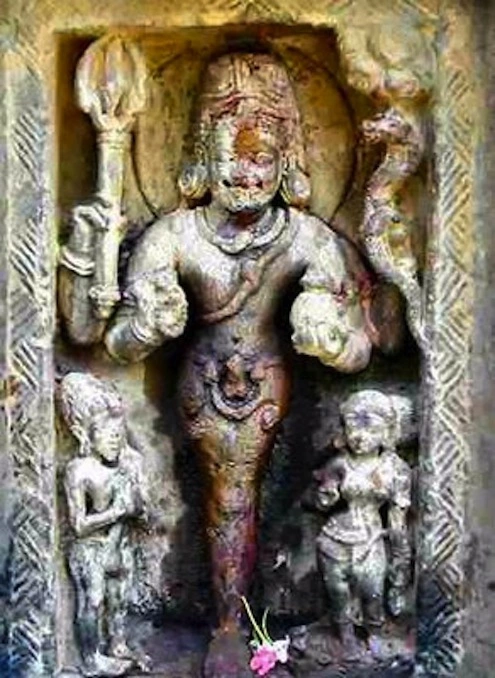
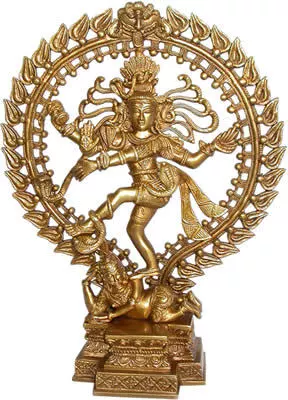
Characteristics male
Males born in Purva Bhadrapada nakshatra are soft-spoken and peace-loving people. They have very strict values, which they follow religiously and it agitates them when others do something totally opposite. Though they are not the most religious people, they are very humble in nature and are always ready to fight on others’ behalf if they ever encounter unfairness. They will get angry if they are slighted in any way and love a simple life free of complications. They have a very kind soul and help those in need, but for one reason or the other, they always create misunderstandings which ultimately leave them unloved. People do respect them a lot even if they are not always financially strong.
Profession male
Males of this nakshatra will have enormous luck when it comes to business endeavours. They are naturally intelligent and have a knack for business. If they prefer going for government jobs, that will also be extremely suitable for them as there are chances that their monthly earnings will be more than average and they will frequently get promotions and salary hikes. Because of that, these males will never have to suffer financially and will be independent in all aspects of life. The growing period for their career will be between the age of 24 to 33. They will find themselves settled between the age of 40 to 54.
Compatibility male
Everything will be normal when it comes to relationships for the males of Purva Bhadrapada nakshatra and they will find loving wives and healthy children. But when it comes to maternal love, these males will not receive much. Their relationship with their mothers will always be on shaky grounds. The reason behind the distance between mother and son could be because of the mother’s professional conditions.
Health male
The males of this nakshatra will have to suffer quite a bit when it comes to their health. Health problems like paralytic attacks will cause them stress. They might have to suffer from acidity and digestive problems and might catch diabetes in the later stage of their life. Problems in the ribs, feet, and sides of their abdomen might also occur.
Characteristics female
Females of Purva Bhadrapada nakshatra are born leaders and are the most dominant ones among their peers. They have a commanding way of speaking and are mostly suitable for the role of a leader while in a team. Projects led by them will go smoothly and people working under them will have no issue following their orders. Their ethics are the most important thing for them and making them do something that goes against that will be next to impossible. Although they find it hard to trust anyone without assessing their intentions. Even if they are financially capable of helping others easily, they will only do so after thoroughly evaluating the situation and making sure that they actually need their help.
Profession female
Females of this nakshatra have the keenness to learn and discover. So professions relating to science and technology will be the best match for them. As they are extremely brilliant in their studies and will ace in their academics, they can look for their career as a scientist or doctor. They can also opt for teaching if they prefer a simpler profession with less pressure. Other professions that might suit her are in the field of astrology, statistics, or research, where they can utilize their brain the most.
Compatibility female
The females of Purva Bhadrapada nakshatra will be blessed to have a very happy and prosperous family after their marriage. They will find a husband who will dote on them, and they will have very good compatibility. Females of this nakshatra will have extremely good luck when it comes to children as they will have many of them, and they will have a very big family. These females are very good at managing the family and will ace at household activities.
Health female
There are some health problems that females of this nakshatra will have to go through. Some issues that might occur are liver problems, low blood pressure, apoplexy, and pain in the ankles.
Purva Bhadrapada Nakshatra Dates 2022
January 7, 2022 February 3, 2022
March 3 & 30, 2022 April 26, 2022
May 23, 2022 June 20, 2022
July 17, 2022 August 13, 2022
September 10, 2022 October 7, 2022
November 4, 2022 December 1 & 28, 2022
Purva Bhadrapada Nakshatra Padas
Pada 1st: Dominated by Mars, the first pada of this nakshatra lies in Aries navamsa. People born om this pada have to work on their patience and learn to control their emotions. Problems regarding their aggressive mentality might occur. They should learn to transmit their emotional energy to achieve their goals.
Pada 2nd: Dominated by Venus and falling in Taurus navamsa, those who belong to this pada will have an energetic nature with, which they will indulge in exploring their dark side.
Pada 3rd: Dominated by Mercury and falling in Gemini navamsa, the people born in this pada have a curious nature. They like to explore the lighter aspect of their nature, and have a humorous personality.
Pada 4th: The fourth pada of this nakshatra is dominated by the Moon and lies in Cancer navamsa. Those born in this pada might have a sense of unsafe aura about them as they have features of both the good and the evil. They mesh well with the other three padas of this nakshatra.
Features of Purva Bhadrapada Nakshatra
Symbol- #Sword, two front legs of a funeral cot, Man with two faces
Ruling planet- #Jupiter
Gender- Male
Gana- Manusha
Guna- sattva/sattva/rajas
Presiding Deity- #Aja-Ekapada
Indian Zodiac- 20° Kumbha – 3°20′ Meena
https://astrotalk.com/nakshatras-constellations/purva-bhadrapada

#Jupiter
Taken by #MikeBorman on December 5, 2024 @ Evansville, #Indiana, #USA
TODAY IS JUPITER'S CLOSEST APPROACH: Today, Dec. 6th, Jupiter is making its closest approach to #Earth for 2024-2025. Extra-big and extra-bright, the giant planet rises in the east at sunset and soars overhead at midnight, #outshining every #star in the night #sky. Look for it between the horns of #Taurus the Bull
X-ray Solar Flares
6-hr max: M2 1308 UT Dec07
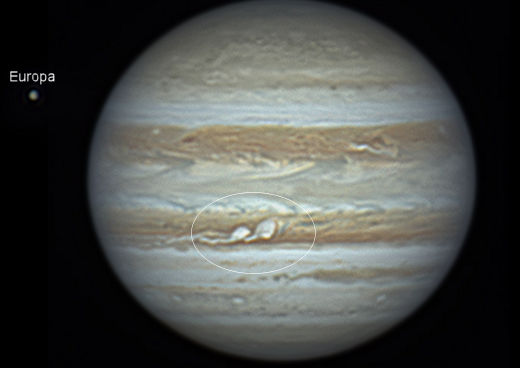
#Jupiter is at its closest to Earth--an event called "opposition." It's a great time to see a massive thunderstorm brewing on the giant planet. The storm is circled in this image from Austrian photographer Michael Karrer:
Karrer's photo, captured with an 8-inch Celestron telescope, captured two white swirls breaking through Jupiter's brown South Equatorial Belt (SEB). "These are giant thunderstorms," explains John Rogers of the British Astronomical Association. "The last time we saw storms like this was 8 years ago in 2016-17."
The white swirls are convective plumes rising from a location perhaps 100 km below the brown SEB. Although the plumes are not very deep (compared to the vast depth of Jupiter's atmosphere), they are wide enough to swallow Earth with room to spare. Rogers believes these storms could spread rapidly through the SEB, causing the familiar brown belt to fade as its color is diluted by the white storm front.
Astrophotographers, this is your chance to monitor a fast-changing alien tempest. Jupiter rises in the east at sunset and stays up all night long. Shining at magnitude -2.8 (only the sun, Moon and Venus are brighter), the giant planet is now an easy target for backyard telescopes from #spaceweather

Characteristics male
The male native born in Vishakha Nakshatra is very optimistic in nature. These natives are brimming with energy and intelligence that they use to get the most out of anything they do or any situation. The native is God-fearing and hence is mindful of his deeds. The value system of the natives is conservative, however, they don't entertain anything that goes against human rights or simply harms the worth of a human in any way. Also, the male born in Vishakha Nakshatra detests superstitions. As a person, the male gives off love to everyone. He has a humbleness towards animals and nature. On the downside, the native can be very rude to you at times when he needs his space. In such situations, it is better to leave them on their own.
Profession male
The male native born in Vishakha Nakshatra has a blessing of speech. Hence anything that involves speech is a good profession for him. The speaking skill of his also ensures him the capability to convince anyone and everyone. These people thus can even try a hand at politics if they wish to. The native born in Vishakha Nakshatra has a loose-hand when it comes to saving money and thus may become a spendthrift. However, if a businessman, the person eventually will learn how to save. Also, a profession in the banking sector is also good for these natives.
Compatibility male
The male native born in Vishakha Nakshatra is close to his mother but may not have the best of her due to some unforeseen situation or separation from her. The native shares a normal bond with his father. However, he will get materialistic gains from his father. Nevertheless, due to being less attached to his father, the male born in Vishakha Nakshatra will grow to be a self-dependent person. Talking about spouse, the native will share a great bond with her. Both of you will live a life you have imagined with nothing much to hinder your love and peace.
Health male
Talking about the health of the male born in Vishakha Nakshatra, he needs to be careful while driving as he is prone to paralysis till the age of 35. Post this age, your health will remain good with minute breathing problems.
Characteristics female
The female native born in Vishaka Nakshatra reeks off a charming personality due to her sweet and soft-spoken nature. The lady is both homely and a dedicated professional with set goals in life that she works hard to achieve. Also, the lady born in the Vishakha Nakshatra is likely to be naturally beautiful. The trait, although, brings her a lot of attention from the opposite gender, but also jealousy from other women. This is why she needs to be cautious about who she calls her friend. Other than just being smart, the lady is also very religious and often goes on pilgrimages. On the downside, the lady needs to be more open to people rather than being confined to her charm.
Profession female
The female native born in Vishakha Nakshatra has a bent toward anything that involves art. Hence, these women will have a good career if they dedicate their time to a profession such as fashion, poetry, media, advertisement and anything related to travelling or being an influencer. Also, support, either from parents or their spouse, is a very basic need for the ladies born in Vishakha Nakshatra to get success in life. Thus, it is suggested that you marry the one who treats your goals as his and doing so will make you independent and empowered in life.
Compatibility female
The female native born in Vishakha Nakshatra is a family-oriented person who supports her family both on personal and professional fronts. The lady gets along well with her husband who likes her for her independent and focused nature. The two together can achieve a lot only if they delay bringing a child to this world a little. The lady is likely to be close to her mother. Besides, she will also share a good bond with her father in law.
Health female
Talking about the health of the female born in Vishakha Nakshatra, the lady is vulnerable to kidney trouble and general weakness. These, however, are not serious troubles and can be averted by simply taking good care of yourself. Eating junk must be avoided.
Vishakha Nakshatra Dates 2022
January 26, 2022 February 22, 2022
March 21, 2022 April 18, 2022
May 15, 2022 June 12, 2022
July 9, 2022 August 5, 2022
September 2 & 29, 2022 October 26, 2022
November 22, 2022 December 20, 2022
Vishakha Nakshatra Padas
Pada 1st: The first pada of the Vishaka Nakshatra falls in the Aries Navamsa and is ruled by Mars. The people born in this pada are highly inspirational and romantic. They really work hard towards their social ambitions and can go to any extent in love affair.
Pada 2nd: The second pada of the Vishaka Nakshatra falls in the Taurus Navamsa and is ruled by Venus. The people born in this pada will be highly creative and talented. This quarter makes the native intelligent.
Pada 3rd: The third pada of the Vishaka Nakshatra falls in the Gemini Navamsa and is ruled by Mercury. The people born in this pada may have an interest in reading, religion, etc., and they have excellent communication skills.
Pada 4th: The fourth pada of the Vishaka Nakshatra falls in the Cancer Navamsa and is ruled by the Moon. The natives born in this pada can get jealous easily. They are also highly emotional and sensitive too.
Features of Vishakha Nakshatra
Symbol- Decorated #archway, #potter’s #wheel
Ruling planet- #Jupiter
Gender- #Female
Gana- #Rakshasa
Guna- tamas/sattva/rajas
Presiding Deity- #Indragni
Indian Zodiac- 20° Tula – 3°20′ Vrishchika
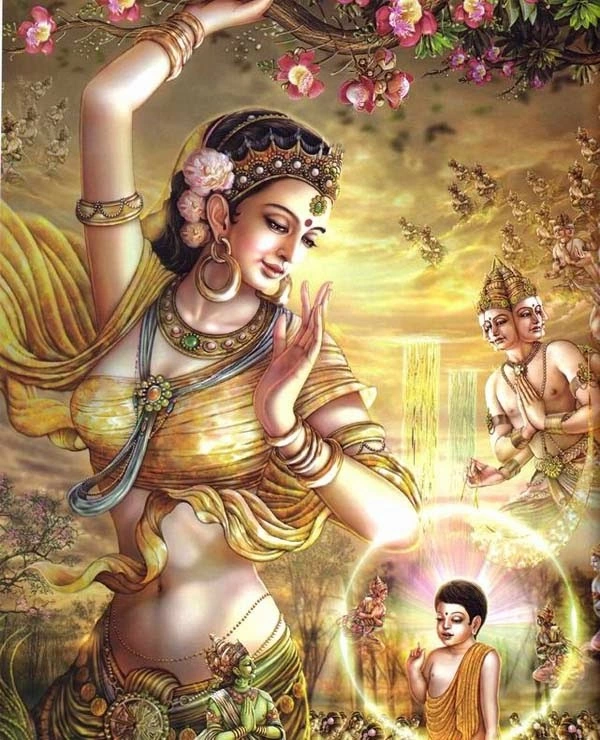
#Punarvasu #Nakshatra
Characteristics male
Males born in Punarvasu Nakshatra are believed to be very spiritual and religious. They tend to have a good nature and behaviour when they are young, but as they grow up, they slowly start adopting a more crass and arrogant behaviour. As they become an adult, they slowly become less likeable, and because of this, being friends with them can be a little stress-inducing. They can sometimes crave for something they cannot have, but they can’t be called materialistic as they are generally satisfied with what they already have. Something that is non-negotiable for them is illegal activities, and neither would they do it themselves nor would they allow someone close to them to do it. Along with that, they can be very generous and helpful to others.
Profession male
Punarvasu male can not work in any business where he will have to partner up with someone as he is a lone wolf, hence why he won’t be able to gain success in the field of business. Other than that, they will gain success in being a teacher or a stage performer being the most suitable for them. Till the age of 32, they should become more careful when making important decisions because of unfavourable stars. Because of their honesty, success in business and making wealth is very hard for them.
Compatibility male
Punarvasu male has great respect and regards for their parents and teachers but having a fulfilling marriage is hard for them. Chances of a failed marriage and second marriage are high for them, and frustration and anxiety regarding their spouse’s health may cause them an unhappy life. There might also be frequent disagreements with other family members, which might ultimately cause them mental health issues.
Health male
Males of this nakshatra are one of the healthiest of all as they have a very strong digestive system and tend to drink a lot of water and take care of themselves. Although they get concerned about their health with the most subtle signs of illness.
Characteristics female
Punarvasu females can have a sharp tongue as they like to speak their mind quite often resulting in frequent fights and arguments among friends and family. This also results in many people holding resentment against her. But deep inside, she has a heart of gold and knows to show respect to whoever she feels is deserving. She likes to live in comfort, hence she will have all forms of materialistic comfort in her home and will also have many maids and servants.
Profession female
Females of this nakshatra can have a career in the show business as they have a real love as well as talent in music. They will also have a keen interest in various folk dances and will want to be certified in these forms of art. There are chances that if they ever decide to take these talents and make them their profession, they will gain much fame and money as well.
Compatibility female
Punarvasu females have great luck when it comes to their life partners because they will have a very good-looking husband, and along with that they will also have a very loving married life. Although there might come times when they will have disagreements, but none too serious to be of concern. Females of this nakshatra will have a very good connection with their husband, and along with him, they will lead a healthy and happy married life.
Health female
Punarvasu females will have to face many health problems such as pneumonia, indigestion, ear pain, goitre, jaundice, or even tuberculosis. This is because they are one of those people who do not take much care of their health resulting in serious illness. To avoid this, females of this nakshatra should give more attention to their health.
Punarvasu Nakshatra Dates 2022
January 17, 2022 February 13, 2022
March 12, 2022 April 9, 2022
May 6, 2022 June 2 & 29, 2022
July 27, 2022 August 23, 2022
September 19, 2022 October 17, 2022
November 13, 2022 December 10, 2022
Punarvasu Nakshatra Padas
Pada 1st: Dominated by Mars, the first pada of punarvasu nakshatra lies in the Aries navamsa. Being able to work in a team should be of utmost concern as that is what will bring success for this nakshatra. There is also a high chance of travelling and to have a mostly adventurous life.
Pada 2nd: Ruled by Venus, this pada of Punarvasu Nakshatra leans more towards Taurus navamsa. The focus lies on materialistic comfort and being able to have a life that is fixed as the earth itself. To fulfil the desire to have a life of comfort is the main concern.
Pada 3rd: Dominated more by Mercury, the third pada of this nakshatra lies in Gemini navamsa. The people born in this pada are intelligent and use their brains to the fullest. The focus is mostly on imagination and science.
Pada 4th: Dominated by the Moon, this nakshatra falls in the Cancer navamsa. They will have a philanthropic nature. The main concern is of helping the ones in need and satisfying the soul, a life apart from materialistic desire.
Features of Punarvasu Nakshatra
Ruling planet- #Jupiter
Gender- #Male
Gana- #Deva
Guna- rajas/sattva/rajas
Presiding Deity- #Aditi
Indian Zodiac- 20° Mithuna – 3°20′ Karka
https://vmst.io/@WestportObservatory/113448755991454209 WestportObservatory@vmst.io - The Taurids continue this week, Mercury makes an appearance under bright Venus after sunset, and the First-quarter Moon sits in Capricornus tonight. Also this evening, Jupiter's moon Io crosses the planet's face from 8:51 to 11:03 p.m. EST, followed by Io itself at 9:34 p.m. with the Great Red Spot transiting at 10:19 p.m. Sunday the moon cozies up to Saturn and actually occults the planet if you're south of Florida. The Full Beaver Moon is next Friday. See your Universe! https://skyandtelescope.org/astronomy-news/observing-news/this-weeks-sky-at-a-glance-november-8-17/
#SkyandTelescope #Mercury #Saturn #Moon #Jupiter #Venus #GRS #Io #Occultation

The 25th #Nakshatra: #POORVABHADRAPADA.
The four quarters are ruled by:
Mangala (Mars) - the 1st quarter,
Shukra (Venus) - the 2nd quarter,
Buddha (Mercury) - the 3rd quarter,
and Chandra (Moon) - the 4th quarter.
Other aspects of this Nakshatra:
The Purushartha (life's vector or motivation) is #Artha.
Totem animal is #Lion (male).
Symbol - a #sword.
Devata (Deity) - #AjaEkapada.
Dosha - #Vata.
This Nakshatra spans from 20°0' in Kumbha (Aquarius) to 3°20' in Meena (Pisces). While the first three quarters of this Nakshatra fall in the sign Kumbha (Aquarius), the last Nakshatra falls in the sign Meena (Pisces). While Shani (Saturn) rules Kumbha (Aquarius), #Guru ( #Jupiter) rules Meena (Pisces) and the Nakshatra #PurvaBhadrapada is ruled by Guru (Jupiter). Hence the outcome is the end result of a combination of all these 3 planets, depending on the quarter of the Nakshatra.
A person born in the first three quarters of this Nakshatra (natal sign being Kumbha (Aquarius) has a slender, tall stature. Thee natives born in the last quarter (natal sign being Meena (Pisces)) have medium height with somewhat fleshy physique. For those born in the Meena (Pisces), a well placed Guru (Jupiter) indicates good fortune, but for those who are born in the sign Kumbha (Aquarius), even a well placed Shani (Saturn), the lord of Kumbha (Aquarius) means that the person has to put in reasonable efforts to get his share of the fortune. Poorva Bhadrapada born have set principles in their life, which they like to follow under any circumstances.
These people like to help others, and can render impartial advice, which helps them earn the respect and confidence of others. Making money is not the first thing in their mind and hence they may be financially weak. But what matters the most for them is the position they achieve in the society, through helping others and following their own set of principles. Also they spend money in the most proper way, avoiding any misuse of the same.
Poorva Bhadrapada born tend to suffer from acidity arising out of mental tension and diabetes.
Females born in this Nakshatra have a well-balanced body. They are a little more practical minded when it comes to charity.
Male Natives
Physical features: One of the peculiar body phenomena is that he has a lifted ankle of the foot. He is of medium size. Broad cheeks with flushy lips.
Character and general events: He is generally a peace loving person but occasional blasting has also been noticed. He is a very simpleton type. Since he is very much principled, he has to suffer a lot mentally as he takes into his heart even a small confrontation or problem. He likes good food and is a voracious eater. He is not very particular about dresses.
He normally expresses impartial opinion. He does not believe in the blind principles of religion. He is ever ready to lend a helping hand to the needy. Even so, hatred and resistance will be his reward in return. He can easily enjoy the respects and confidence of others even if he is financially weak. He is God fearing and performs religious rites in accordance with the scriptures. While the native will be moderately rich, he likes to have respect and honor from the public rather than accumulating money. He is impartial in expressing his views.
- Education, sources of earnings / profession: As he is a born intelligent and has the knack of trade he can shine in any type of job he undertakes. If he is employed in a government organization he can look forward for unexpected gains or promotions from the government. He is capable of quite independent life both socially and financially. Period between 24 and 33 years of age will mark remarkable all-round progress in his life. Even though occasional mental tension is not ruled out during this period. Period between 40 years and 54 years of age will be his golden period when he can establish fully. He keeps much restriction on the spending activities.
He can shine in the field of business, banking, government job, or as a teacher, actor or writer, research worker and astrologer or astronomer. If in government service, most of the Poorva Bhadrapada born are engaged in the revenue collection department or in any capacity where cash transactions take place.
- Family life: He cannot enjoy fully the love and affection from his mother. As per the learned in astrology, the native will cause death or separation of his mother early. But in my personal experience, the native cannot derive full love and attention of his mother, as she will be working. Naturally, being a working mother, she is away most of the time and the native is automatically separated. Hence our ancients who have written this dictum are also correct to the extent of separation, but not to the extent of death. For causing death other planetary affliction is also necessary and birth in this Nakshatra alone is not sufficient.
One of the redeeming features is that there will be a lot of things with which he can be proud of his father. Subject to other favorable planetary positions, father of the native has been found to have fame and possess a very good moral character. Such popularity may be mainly in the field of fine arts, oration or in the writing field. In spite of these good qualities of his father, the native quite often disagree with the opinion and confrontation takes place.
- Health: He is prone to paralytic attack, acidity and diabetes. He may have problems with the ribs, flanks and soles of the feet.
Female Natives
Females born in this Nakshatra will also enjoy more or less the same results as mentioned above in addition to the results mentioned below:
Physical features: She is neither lean nor fatty, and neither tall nor short. In some cases very slim figure have also been noticed. However, she is very beautiful in appearance.
Character and general events: Honesty and sincerity are the main characteristics of this native. She is of the type who believes that let her head is cut down, she will not deviate from the right path and principles. She is a born leader. She is capable of extracting work from others. Hence she will be successful when she gets power and authority. Example of extreme optimism.
While she has the humanitarian doctrine, she will not extend her helping hand unless she is convinced fully that such kindness, sympathy and generosity are actually required. There is a peculiar politeness in her behavior.
Education, sources of earnings / profession: Her education will be in the scientific or technical field. Hence the native is earmarked for the profession of teacher, statistician, astrologer or research worker.
Family life: She will have more attachment towards her husband and will be blessed with children. She has good ability in the house hold administration. She will enjoy lots of benefits from her children. She will have many children if she marries a Rohini boy.
Health: She is prone to low blood pressure, dropsy or swollen ankles, apoplexy and palpitation. Perspiring feet and enlarged liver .
https://vedictime.com/en/library/nakshatra/pbhadra
https://www.chiragdaruwalla.com/nakshatras/purvabhadrapada-nakshatra/

The 20th #Nakshatra: #POORVA ASHADHA.
The four quarters are ruled by:
Sūrya (Sun) - the 1st quarter,
Buddha (Mercury) - the 2nd quarter,
Shukra (Venus) - the 3rd quarter,
and Mangala (Mars) - the 4th quarter.
Other aspects of this Nakshatra:
The Purushartha (life's vector or motivation) is #Moksha.
Totem animal is #Monkey (male).
Symbol - #elephant's #tusk.
Devata (Deity) - #Apas
Dosha - #Pitta.
This Nakshatra spans from 13°20' to 26°40' in the sign Dhanu, the sign ruled by the lord of wisdom, #Guru ( #Jupiter) while the Nakshatra is ruled by #Shukra ( #Venus). People born in #PurvaAshadha have a good physique with a tall body. They are intelligent, convincing, tend to get into arguments with others and prove their intelligence through the arguments. But a poorly placed mercury in a duel sign results in these people being in double minds while taking any important decision. While they are good at advising others, they lack the necessary logical reasoning to take a well thought out decision. But there is a tendency to make decisions on impulse and these generally result in making a fool of these people.
A strong Mangala (Mars) in the natal chart results in making an argumentative, obstinate and quarrelsome personality. They have very close friends. If only these people can overcome their argumentative nature and learn how to make decisions properly, they can rise to almost any levels. They are sincere in their efforts and enough persistence on their part can make miracles.
Compared to the males, the females born in this Nakshatra are sincere and take every step after considering the pros and the cons. They have a determination to lead the group, wherever they are. Their natural intelligence, coupled with these qualities, can make some of the best managers.
They are religious and god-fearing people. A good combination of Shukra (Venus) with Buddha (Mercury) can result in making a good poet. They enjoy varied interests, ranging from ancient art to music to mystics and occult sciences. But these interests are never properly planned till the end of young age. It is only in the middle age that Poorva Ashadha born seriously start thinking about pursuing any of these interests.
Poorvaashadha born enjoy good married life. Shani (Saturn) aspecting the seventh house may delay the marriage in some cases. Poorva Ashadha born are prone to suffer from problems of the lungs.
Male Natives
Physical features: He will have lean and tall body. His teeth will be very beautiful, ears long, eyes bright, waist narrow and arms long. In other words, he has good attractive physical features.
Character and general events: He has exemplary intelligence. There is a tendency of jumping to a conclusion on the matters he deals with. Nobody can defeat him in argument. He has extra-ordinary convincing power. He will not under any circumstance subdues to others, whether he is right or wrong. On the one side you can have a lot of advices from him but you cannot render any advice to him.
While he expresses that he is very courageous he cannot reach that state unless he is forced either by circumstances or by persons to show the requisite courage. In decision making he is very poor. He finds it difficult to take decision even on small matters. Once he is aroused by instigation or argument he takes decision without thinking the merits and demerits of such action and he sticks to that decision till the end. Even if he is completely wrong in his steps, nobody can change his decision. Such is the obstinate character of the native.
He likes to do a lot of things for others for nothing in return but he will be subjected to a lot of criticism. He derives maximum benefits from the unknown persons. He cannot keep any permanent relationship with anybody. If he can work with a particular aim with full sincerity he can reach to the top of life. He hates external show. He is God fearing, honest, humble and far from hypocrisy. He can never think of doing anything, which will disturb the progress of others.
He will be highly religious and always interested in feeling revered class and will devote much of his time in pooja or others religious acts. He is good collector of antiques. He may also take interest in writing poems.
Education, sources of earning / profession: Even though he can shine in almost all the fields, he is particularly fit for doctor's profession or fine arts. He is advises not to venture for any business unless he has dependable employees or managers. He will be attracted to the studies of occult philosophy and sciences and he can shine well. Period up to 32 years of age will be period of trial and error. Thereafter he slowly starts climbing ladder of success. Period between 32 years and 50 years of age will be very good.
Family life: He cannot enjoy any benefits from his parents. However, he will be lucky to have benefits from his co-borns, particularly from his brothers. He will be spending most of his life in foreign land.
His married life will be more or less happy. His marriage may be delayed. In some cases it has been noticed that the marriage takes place in a most competitive way. He is more inclined towards his wife and in-laws. Even then there will be frequent disharmony between the couples. At last he finds peace in the company of his wife. He will be lucky to have the most talented and respectful children, who will bring name and fame to his family. There may be at the most two children.
- Health: While his outward appearance is extremely good, his internal constitution may not be good i.e., his health may not be good. It is quite often noticed that this native is prone to a particular incurable disease. Still he will not care for his health. He is prone to severe whooping cough, breathing trouble, bronchitis, tuberculosis, heart attack and malaria or isnofelia is also found in such native. Even in the state of critical illness he will not hesitate to jump into the work, which he feels, should be completed. He may face problems with his thighs. He must take care about his lungs, as he is liable to suffer from rheumatic pains.
Female Natives
Physical features: She is extremely beautiful. Her almond eyes play the role of a magnet. Long nose and graceful look, fair complexion, brown-colored hair.
Character and general events: She is intelligent. She has energy, enthusiasm, vigor and vitality. Hence she is greedy and aspiring for everything. However she is not obstinate. She can attain more success when adverse conditions prevail. She will weigh the merits and demerits of each case and come to a final decision after deep consideration. She will speak out what she feels is right whether others will digest it or not. She will be fond of dogs and other pet animals. She makes promises but will not be fulfilled. Tendency of hatred towards her parents and brothers has been noticed. She will be leader among her relations. A determined, truthful character.
Education, sources of earnings / profession: Generally females born in this Nakshatra are educated. She may be a teacher, bank employee or attached to religious institutions. If mercury is also placed with Moon, she may earn as a publisher or writer.
Family life: She is very good in household activities. When the age goes by, she develops more and more attachment to her husband, with the result her life becomes more and more happier. Benefit from the children will be to a limited extent only.
Health: Her health will generally be good. In addition to the diseases mentioned in the case of male natives above, she will have acute disorder of the womb and uterus. Problems connected with thighs.
https://vedictime.com/en/library/nakshatra/pshada
https://www.chiragdaruwalla.com/nakshatras/purvashadha-nakshatra/

The 19th #Nakshatra: #MOOLA.
The four quarters are ruled by:
Mangala (Mars) - the 1st quarter,
Shukra (Venus) - the 2nd quarter,
Buddha (Mercury) - the 3rd quarter,
and Chandra (Moon) - the 4th quarter.
Other aspects of this Nakshatra:
The Purushardha (life's vector or motivation) is #Kama.
Totem animal is #Dog (male).
Symbol - a #tail of #lion or #goad for elephants.
Devata (Deity) - #Nirritti or #Nairutti.
Dosha - #Vata.
This is the 19th Nakshatra of the zodiac, spanning from 00°-00' to 13°20' in the sign Dhanu. This is a Nakshatra owned by the node #Ketu, the entire span of this Nakshatra falls in the sign Dhanu, owned by the auspicious planet #Guru ( #Jupiter). While Guru is the planet of #wisdom, Ketu indicates hard work or #Tapasya. Hence the people born on this Nakshatra gain the wisdom and knowledge through their hard work. They have their own set of principles to live by.
Natives born on this Nakshatra are tall and have a good physical appearance. They are #peace #loving personalities, but will not hesitate to fight for what rightfully belongs to them. It is widely believed that a Moola born person becomes harmful to his/her parents. This is because the meaning of the word, Moola means the root. Hence the perception that a Moola born is harmful to his/her parents. But this is largely unjustified. A valuable piece of material lost on this Nakshatra will be found out by its owner, as the word Moola also means 'getting back to the square one'.
These people are good advisers. These people have multiple skills and hence, change of professions is a regular feature for these people. They are also good advisers and act as consultants.
Moola born are frequent spend thrifts, spending their money recklessly. But they do not resort to unfair means to earn money to support their expenditure. Moola people are also very devoted in their relations, be it friendship, marriage, partnership or employment. They are really devoted and continue with these relations even during the most trying times.
Out of all the family relations, these people do not enjoy good equation with their parents, while their married life is more or less satisfactory.
Male Natives
Physical features: He has good physical appearance. He will have beautiful limbs and bright eyes. He will be the most attractive person in his family.
Character and general events: He has a very sweet nature and is a peace loving person. He has a set principle in his life. There is a general fear about the persons born in Moola Nakshatra. It isn't like that always. He can stand against any adverse tidal wave. He has the capacity to penetrate that wave and reach the destination.
He is not bothered about tomorrow nor he is very serious about his own matters. He keeps all the happenings in the hands of god and become prey to optimism.
- Education, sources of earning/profession: He does not keep control of the balance of receipt and payment resulting in debt. He is the type of person who renders advice to others but not capable of keeping the same principles for his own use. This peculiar characteristic generally fits them for the profession of financial advise or religious advice.
Since he is skilled in several fields there will be frequent changes of profession or trade but stability in this direction seems to be a very rare phenomenon. Because of this inherent quality of frequent changes he is always in need of money. Moola born have a peculiar characteristic of mixing with his friends. It is quite natural that when expenditure is more than income and the native is not ready to earn anything by illegal mode the balance will always be in the negative. Hence it is advisable that he must keep away such friends and while he believes that all that is taking place on the earth is due to the blessings of HE, he should also try to be a little selfish and find a way to improve the inflow of income.
Out of all the 28 Nakshatras, I have come to a conclusion that these are the people who devote their entire energy with utmost sincerity to their employers as also to any persons who have kept faith or trust in Moola born. A deep study of the life of these persons has revealed some facts about their separate entity than other Nakshatra born i.e. some sort of internal force or some external force is briefing the natives in all the work they undertake.
He earns his livelihood in a foreign place. It is advisable that he must, as far as possible, try to get an opportunity either in the professional field or in the business field in a foreign land or country as he cannot have good luck in the native place; whereas he can have much better success in a foreign land.
As already mentioned above, he is capable of shining in all walks of life, particularly i the field of fine arts, as a writer and in the social work.
Family life: Excepting a few cases, it is seen that Moola born cannot have any benefit from his parents whereas he is all self-made. His married life will be more or less satisfactory. He gets a spouse with all the requisite qualities expected from a good wife.
Health: Probable problems he will be affected with are tuberculosis, isnofelia, paralytic attack or stomach problem. Whatever may be the nature of disease it will not be visible in his appearance or face as even when he is critically ill, his expression and the attraction of the face will not change. Normally it is seen that the native is not in the habit of taking care of his own health. With the result, some severe health problems can be noticed in his 27th, 31st, 44th, 48th, 56th and 60th age.
Once he is addicted to any drug it will be very difficult to control such addiction. Hence it must try to keep away from any material of intoxication.
Female Native
Physical features: Medium complexion - neither black nor white or swarthy in hot countries. Reddish color in cold countries. Her principal teeth will not be close with great distance, wealthy sign.
Character and general events: Mostly these natives are pure-hearted. However, obstinacy cannot be ruled out. Even on small matters she will be very much adamant. Since she lacks knack of dealing she quite often lands into problems.
Education, sources of earning/profession: Mostly, Moola born females do not acquire much education. These females don't show any interest in studies. Most of these females spent more than two terms in the same standard or class. Ultimately they leave further education. The only exception is that if Jupiter is placed in opposition i.e. aspects or placed in Magha Nakshatra, the native may be a doctor or employed in an envious position i.e. such females will have excellent academic record and reach to the top.
Family life: Females born in this Nakshatra, unlike the males, cannot enjoy full conjugal bliss. she will have a separated life, mainly due to the death of her husband or divorce. This result cannot be blindly applied as other planetary positions of favorable nature will, blindly applied as other planetary positions of favorable nature will, to a certain extent, nullify the bad effects. There may be delay in the marriage and also some hurdles. If the position of Mars is unfavorable she will have to face a lot of problems either from her husband or from children.
Health: She is prone to rheumatism, lumbago, hip or back ache combined with pain in arms and shoulders.
https://vedictime.com/en/library/nakshatra/moola
https://www.chiragdaruwalla.com/nakshatras/moola-nakshatra/

The 16th #Nakshatra: #VISHAKHA.
The four quarters are ruled by:
Mangala (Mars) - the 1st quarter,
Shukra (Venus) - the 2nd quarter,
Buddha (Mercury) - the 3rd quarter,
and Chandra (Moon) - the 4th quarter.
Other aspects of this Nakshatra:
The Purushartha (life's vector or motivation) is #Dharma.
Totem animal is #Tiger (male).
Symbols: a potter's wheel or an #archway.
Devata (Deity) - #Shakragni (#Indra and #Agni).
Dosha - #Kapha.
This is the 16th Nakshatra of the zodiac, spanning from 20°00' in Tula to 3°20' in Vrshchika. Hence its first three quarters fall in the sign Tula, while the last quarter falls in the sign Vrshchika. While the Nakshatra Vishakha is ruled by the wise planet Jupiter, Tula is ruled by #Venus and Vrshchika is ruled by #Mars. #Guru ( #Jupiter) and Mangala (Mars) is a friendly combination, while Guru (Jupiter) and Shukra (Venus) belong to the opposite camps. As a result, while the last quarter of this Nakshatra brings to fore all the bright side of Guru (Jupiter) and Mangala (Mars), people born on in the first three quarters are more interested in the material pleasures.
Vishakha born have a well-proportioned body, but they tend to be obese and put on weight with the passing of age. Females born in this Nakshatra are beautiful and religious in nature. They need to have a well balanced diet and should exercise regularly to keep them fit.
These people are god fearing and like to be guided by truth. For those born in the first three quarters of Vishakha, balance is the nature of life, as they always try to avoid extremes. This is apparent in their religious beliefs as well, with these people neither being too dogmatic nor too advanced when it comes to religion. But those born in Vrshchika are very firm in their belief, rarely changing their views. But generally, a Vishakha born is secular in his or her religious beliefs.
A well placed Chandra (Moon) and Buddha (Mercury) make these people crowd pullers. Good Buddha (Mercury) also bestows them with good oratory skills. Females born in Vishakha have a sweet tongue and quiet diplomatic in their choice of words.
These people do not like the idea of working for others. They are better suited for independent businesses. Consultancy is a good profession for them, as these people possess the required skills for the same. A Vishakha born consultant, born in the Vrshchika will rarely reveal information about his clients to others. For this reason, they are also suited for jobs that involve high levels of responsibility.
These people normally enjoy good health. They are full of vigor and enthusiasm, often working long hours continuously. Because of their addiction to certain kinds of food and the tendency to neglect their health, they may suffer sudden attacks involving the nerves system.
Male Natives
Physical Features: His face will be round, bright and physical appearance extremely attractive. We have noticed two types of physical appearance i.e. one with fatty and long structure and the other with very lean and short structure.
Character and general events: He will have full of vigor and vitality as also intelligence of the highest order. He is firm believer of god and leads a life of truthful existence. He does not believe in the orthodox principles not the age old tradition. He is fond of adopting modern ideas.
Mostly he lives away from his family. He is ready to give weight to others in excess of what is actually required depending on the weight of the persons to whom he is dealing in. Slavery is suicidal for him. While he is very much religiously active, he does not follow any superstitious religious fanaticism. He treats all religions, castes and creed as one. He is a follower of Gandhian philosophy of 'Ahimsa Paramodharma' (Religion is non-violence or The most preferable and auspicious Dharma is non-violence) and 'Truth is God'. In certain cases I have seen that such type of persons accept Sanyasa (saintism) when they touch 35 years of age. When we sanyasa it does not mean that complete detraction from the 'Grihastashram' (duty towards the family). He will simultaneously look after the family and follow sanyasa.
- Education, sources of earning/profession: He is a very good orator and has the capacity to attract crowd. He will win several prizes in elocution competition. Hence he is the fittest person to be in the political circle. There is a peculiar spending tendency in him. While on the one side he is very stingy on the spending on the other side he is extravagant in the spending where it is not required.
He is fit for doing an independent business, job involving high responsibility, banking and religious professions, mathematician or a teacher or a printer.
- Family life: He cannot enjoy love and affection of mother. One of the primary reasons for such lack of care may either due to mother's death or unavoidable circumstances and atmosphere which warrant his mother to be away from the native. There may be several beneficial points of his father with which he can always be proud of. Even then, not much help will be derived from his father also. In other words, we have to come to a conclusion that the native leads more or less a life of an orphan. There may be a lot of difference of opinion between his father and him on several points where an amicable settlement on any matter may not be possible. It is due to these reasons he is right from the childhood a hardworking and self made person.
He loves his wife and children very much. Even so, he has two bad qualities. One is that he is addicted to alcohol and another is that he indulges in too much sex with other ladies. In spite of these weaknesses he will not make this weaknesses as hindrance either in the family or social life.
- Health: Since has has inherent vigor and vitality given by the god, his health will normally be very good. However, he is prone to paralytic attack. I have in more than 70 percent of Vishakha born people noticed this paralytic attack after the age of 55 years. In the remaining 30 percent cases, I have every doubt that the native could not provide me the correct birth time as otherwise the same symptom of paralytic attack would have in one form or the other present in them. It is also seen that they are prone to asthmatic attack.
Female Natives
Females born in this Nakshatra will enjoy more or less the same results mentioned for the male natives and in addition they will enjoy the following results:
Physical features: Her features extremely beautiful. This inherent godly gift of attractive physical features normally attract the men folk and she has to face lot of problems on this account.
Character and general events: She has a very sweet tongue. She is expert in the household activities and if employed in the official activities also. Arrogance is very rarely noticed in these females. She does not believe in pomp and show and she is very simple. She does not like to increase her beauty by make up. She is subject to jealousy of other female friends and relatives. She is a firm believer of religious principles and quite often observe fast and perform poojas and visit holy places frequently.
Education, sources of earning/profession: She is interested in poetry. If there are other good planetary combinations, particularly when Moon and Venus are together, she may become a famous writer. She will have academic excellence in arts or literature.
Family life: She treats her husband as her god. Her religious attitude will confer love and affection from her in-laws. As she looks after the welfare of all family members and even distant relations, she will have power and authority conferred on her. She will have more attachment to her father-in-law. She may frequently be visiting sacred places.
Health: She will generally have good health. However, she is prone to kidney trouble, goiter and weakness due to homo-sexuality.
Nakshatras
https://www.chiragdaruwalla.com/nakshatras/vishakha-nakshatra/




